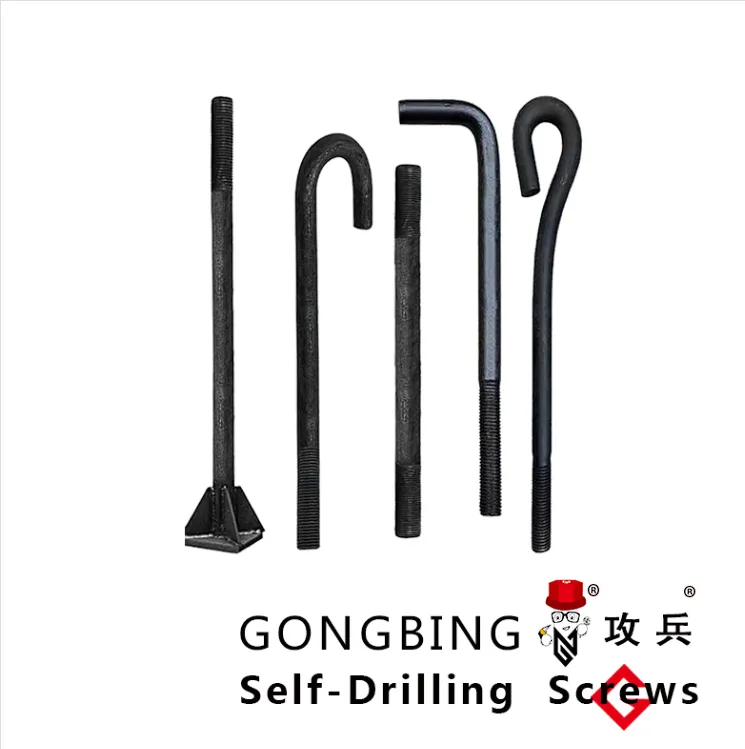Double Head Bolts in Mining Equipment Maintenance
The mining industry thrives on durability, precision, and reliability. Equipment exposed to extreme conditions—like heavy loads, vibrations, and corrosive environments—requires fastening solutions that outlast conventional hardware. Enter double head bolts, stainless steel double end threaded studs, and double ended studs with flanges, three specialized components revolutionizing maintenance practices in mining operations. This article explores their roles, benefits, and answers common questions to guide informed decisions.

The Role of Double Head Bolts in Heavy-Duty Mining Equipment
Double head bolts are engineered for applications where traditional bolts fall short. These bolts feature threaded ends on both sides, allowing secure fastening in complex assemblies. In mining equipment, they excel in connecting critical components like crusher frames, conveyor systems, and hydraulic machinery.
Their dual-threaded design ensures uniform load distribution, reducing stress concentrations that lead to premature failures. For example, in dragline excavators, double head bolts secure massive booms and buckets, enduring constant tension and shock loads. Their resistance to loosening under vibration minimizes downtime—a key advantage in 24/7 mining operations.
Additionally, these bolts simplify maintenance. When replacing worn parts, technicians can remove one end without disassembling entire structures, saving time and labor costs. Combined with corrosion-resistant coatings, double head bolts extend equipment lifespan even in abrasive, moisture-rich mining environments.
Why Stainless Steel Double End Threaded Studs Excel in Corrosive Environments
Mining sites often face corrosive challenges—from acidic groundwater to chemical-laden air. Standard steel fasteners rust quickly, compromising structural integrity. Stainless steel double end threaded studs address this issue with superior material properties.
Made from grades like 304 or 316 stainless steel, these studs resist oxidation, pitting, and chemical degradation. They are ideal for securing pipelines, pump housings, and processing tanks exposed to harsh fluids. For instance, in slurry pumps, stainless steel double end threaded studs maintain tight seals despite constant exposure to abrasive, corrosive mixtures.
Their double-ended threading also enhances versatility. Unlike single-threaded bolts, these studs allow adjustable connections between mismatched components. This flexibility is invaluable when retrofitting older mining equipment with modern parts. Moreover, stainless steel’s non-magnetic properties prevent interference with sensitive electronic sensors in automated systems.
Double Ended Studs With Flange: Enhancing Stability in High-Vibration Zones
Vibration is a relentless enemy in mining equipment. Crushers, drills, and screening machines generate intense shaking, loosening fasteners over time. Double ended studs with flanges combat this problem with a unique design: a central flange acts as a built-in washer, distributing clamping force evenly across surfaces.
The flange prevents lateral movement, ensuring joints remain tight even under cyclic loads. In ball mill assemblies, for example, double ended studs with flanges secure liners that endure constant impacts from grinding media. The flange also eliminates the need for separate washers, reducing part counts and installation complexity.
These studs are often paired with locknuts or thread-locking adhesives for added security. Their compatibility with high-strength materials like alloy steel makes them suitable for critical connections in haul trucks and drilling rigs. By minimizing vibration-induced failures, double ended studs with flanges reduce unplanned maintenance and boost operational efficiency.
FAQs: Addressing Key Questions About Double Head Bolts
What advantages do double head bolts offer over standard bolts in mining equipment?
Double head bolts provide dual-threaded versatility, enabling faster assembly and disassembly. Their design improves load distribution and resists vibration loosening, making them ideal for high-stress mining applications.
How do stainless steel double end threaded studs handle extreme temperatures?
Stainless steel double end threaded studs retain strength and corrosion resistance even at elevated temperatures. Grades like 316 stainless steel perform well in environments up to 870°C (1,600°F), common in smelting or processing units.
Can double ended studs with flanges be reused after disassembly?
Yes! Provided there’s no thread damage, double ended studs with flanges can be reused. Their durable construction withstands multiple torque cycles, offering long-term cost savings.
Can stainless steel double end threaded studs withstand extreme temperatures?
Yes! Stainless steel’s thermal resistance allows these studs to perform reliably in both high-heat processing units and freezing underground tunnels without losing tensile strength.
Why invest in stainless steel studs instead of coated carbon steel?
While coatings wear off over time, stainless steel double end threaded studs offer inherent corrosion resistance. They eliminate recoating costs and perform reliably in wet, acidic, or saline mining environments.
In the demanding world of mining, equipment longevity hinges on choosing the right fasteners. Double head bolts, stainless steel double end threaded studs, and double ended studs with flanges deliver unmatched durability, vibration resistance, and corrosion protection. By integrating these components into maintenance strategies, mining operators can reduce downtime, cut costs, and maximize productivity. Whether you’re upgrading existing machinery or designing new systems, these fasteners are a smart investment for sustainable success.
-
Weatherproof Plastic Expansion Anchors for Outdoorព័ត៌មានJun.06,2025
-
Sustainability in the Supply Chain: Eco-Friendly TEK Screws Productionព័ត៌មានJun.06,2025
-
Load-Bearing Capacity of External Insulation Fixingsព័ត៌មានJun.06,2025
-
Double Head Bolts: Enhancing Efficiency in Industrial Machineryព័ត៌មានJun.06,2025
-
Corrosion Resistance in Chipboard Screws: Coatings for Wholesale Durabilityព័ត៌មានJun.06,2025
-
Butterfly Toggle Bolts : Enhancing Structural Resilienceព័ត៌មានJun.06,2025
